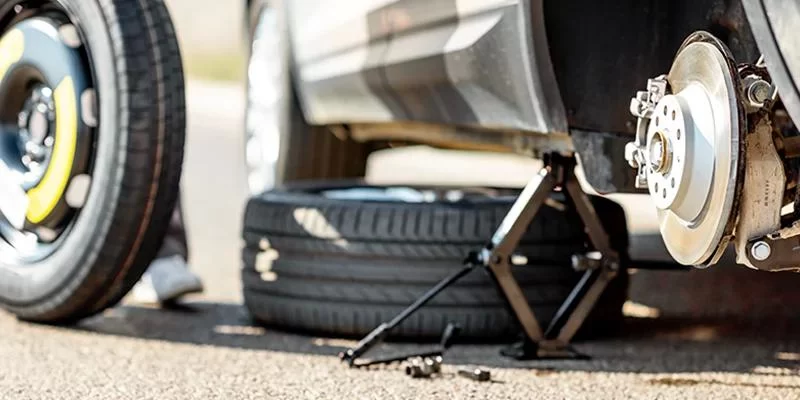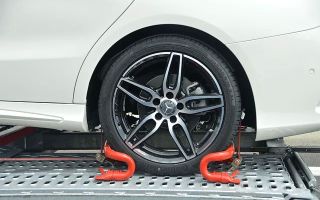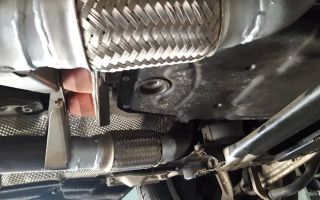If you find yourself in the unfortunate situation of having a flat tire while on the road, you may be wondering whether it’s safe to continue driving until you find help. The answer isn’t always straightforward, but understanding the risks and knowing your options can make a big difference. In this article, we’ll walk you through the potential dangers of driving with a flat tire, what you should do instead, and how to handle the situation until professional help arrives. We’ll also explore how towing services can assist you and the importance of proper tire maintenance to avoid these stressful scenarios in the future.

MR. TIRE INC.
2078 New York Ave, Huntington Station, NY 11746, USA
1. What Happens When You Drive With a Flat Tire?
Driving with a flat tire is risky, both for your safety and for your vehicle’s well-being. A flat tire occurs when the air pressure inside the tire is insufficient, which can result from a puncture, a leak, or even the tire being overinflated and losing its air. When a tire loses air, the vehicle’s balance and handling are compromised. If you try to drive with a flat tire, it can cause significant damage to the tire, wheel, and possibly even the suspension system of your vehicle. In some cases, it may even lead to a complete blowout, causing a dangerous loss of control over the vehicle.

MR. TIRE INC.
2078 New York Ave, Huntington Station, NY 11746, USA
Key Risks of Driving With a Flat Tire:
- Loss of vehicle control, increasing the likelihood of an accident.
- Severe damage to the tire, making it irreparable.
- Potential damage to the wheel and suspension system, leading to costly repairs.
- Increased risk of driving in unsafe conditions, especially at higher speeds.
2. What Should You Do Instead of Driving With a Flat Tire?
While it might be tempting to drive just a little longer to find help, the best course of action is to stop as soon as you safely can. If you're in a situation where you can’t immediately pull over to a safe area, try to reduce your speed and drive carefully to the nearest safe spot. Here’s what you can do:
- **Pull over to a safe area:** Find a flat surface away from traffic to avoid being in a hazardous situation.
- **Turn on hazard lights:** Make your vehicle visible to other drivers to prevent accidents.
- **Inspect the tire:** If you're comfortable and know how to, check the flat tire to determine if it’s repairable. Otherwise, call for professional help.
- **Use a spare tire if available:** If you have a spare tire, it’s better to replace the flat one temporarily and drive to a tire shop.
Can I Use Tire Sealant or a Portable Air Pump?
If you have tire sealant or a portable air pump on hand, it may be possible to temporarily fix the tire enough to drive it to a safe location. However, these are only short-term solutions and shouldn’t be relied on for long-distance driving. Always have your tire checked by a professional afterward to ensure there is no further damage.
3. How to Call Towing Assistance for Your Flat Tire
When it’s clear that driving with a flat tire isn’t an option, calling for towing assistance is the safest and most reliable solution. Towing companies are experienced in handling flat tire situations and can either repair or tow your vehicle to a nearby service center. Depending on your location, the type of vehicle, and the severity of the damage, towing services can offer a range of solutions, including:
- **Roadside assistance for tire repair** – If your tire is repairable, a technician can patch the tire or replace it with your spare.
- **Towing services** – If the tire cannot be repaired on-site, your vehicle will be towed to the nearest shop for further assessment.
Many car insurance providers and roadside assistance companies offer towing services as part of their plans, so it’s worth checking if you're covered. It’s also a good idea to keep the contact information of a reliable towing company in your phone for emergencies.
4. Prevention is Better Than Cure: How to Avoid Flat Tires
While it’s impossible to completely eliminate the chance of getting a flat tire, there are steps you can take to minimize the risk:
- **Maintain proper tire pressure:** Regularly check your tire pressure and ensure it’s at the recommended level.
- **Inspect tires for damage:** Check for signs of wear and tear, such as cracks, bulges, or punctures, and replace damaged tires promptly.
- **Avoid road hazards:** Be cautious when driving over potholes, debris, or sharp objects that could puncture your tires.
Real-Life Example: A Flat Tire on a Remote Highway
Last winter, I found myself stranded on a remote highway with a flat tire. The weather was cold, and the nearest service station was miles away. Fortunately, I had a reliable roadside assistance service, and a technician arrived within an hour to replace the tire. The experience reminded me of how important it is to have a reliable towing company or roadside assistance service on hand, especially in rural or hard-to-reach areas.
5. Conclusion: Stay Safe and Plan Ahead
If you're ever in a situation where you have a flat tire and need to know what to do, remember that driving on a flat tire is dangerous and can lead to further damage. Pull over to a safe location, use a spare tire if possible, and call for professional towing assistance if necessary. By keeping your vehicle well-maintained and preparing for emergencies, you can avoid the stress of dealing with flat tires on the road.
























